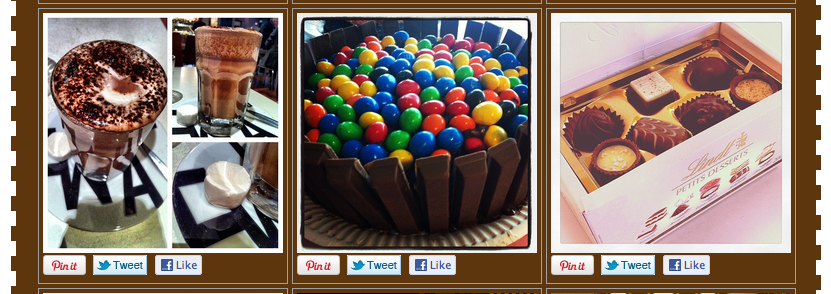Knowledge Base/Visual SML/Visual SML Documentation
Instagram Widget
- Instagram - Pull in photos from Instagram's platform using specific tags to display on your tab.
- Basic Settings: Defaults to 8 max photos, and 20 items per page.
- By Tag: Enter a Tag Name to designate the specific photos you want displayed and click Add.
- By User Feed: Pull in a specific user's pictures. (Must authorize your account to use this option)
- Click on Authorize on Instagram.
- Enter your Instagram Username and Password and click on Login and Allow Access.
- Select By User Feed (now enabled after authorizing.)
- Enter any Username whose feed you would like to display on the tab and click Add. (Note: If you want to display your pictures, you must still enter your username into this field)
- Select the maximum number of photos to display. Choose from: 1-10, 20, and 40.
- Select the number of items to display per page. Choose from: 4, 8, 12, 16, 20, and 40.
- Advanced Settings: Defaults to include Like, Pin it, and Tweet buttons.
- Include a Facebook Like button, Twitter Tweet button, Pinterest Pin It button, and/or Tumblr button by selecting True, next to the appropriate item. False will exclude that button.

Set the look and feel of this widget in the Style settings on the right.
- Click on the bar that appears across the top of the widget to select it if you haven't done so already
- Next click on the Style tab in the toolbox to the right.
- Minimize Page by clicking the bar and click into Current Widget to open a new set of styling options for that widget.
- Settings include the following options:
- Padding: Create space around the content of the widget to alter how it appears in respect to the widget's border and background.
- Enter any pixel width for the Top, Right, Bottom and Left sides of the widget.
- Margin: Create space around the entire widget, including the padding, to alter how it will appear next to other widgets.
- Enter any pixel width for the Top, Right, Bottom and Left sides of the widget.
- Font: Set the font and size for any text that might appear in the widget. (Note: Does not apply to all widgets.)
- Headers: Select the font and size of the Headers (titles) in the widget.
- Body/Default: Select the font and size of the text that appears in the widget.
- Button Text: Select font and size of the button text. (Only certain widgets contain buttons, i.e. Twitter (Follow) and Signup (Submit).)
- Color: Click into the field to enter a hex code, or choose from the color selector that appears.
- Background: Color will appear behind this widget specifically.
- Border: Color of the border you place around this widget. (Pattern and size of border can be determined below)
- Header: Color of any titles.
- Body: Color of any text.
- Links: Color of any links.
- Links (hover): Color any link will change to when the cursor is moved over the link.
- Button: Color of any buttons, i.e. Follow or Submit.
- Button Text: Color of the text inside the button.
- Links: Select Underline or No Underline to designate how links are displayed in the widget.
- Border: Choose the size and pattern for a border that will wrap around the individual widget including the padding but excluding the margin.
- Size range: 1px-5px and 10px
- Patterns: Solid, Dotted, Dashed, Inset, Outset, Double
- Advanced CSS: Use this to create a more complex look of the widget that is not limited to the choices offered by the pre-set widget styling options. Any settings entered here will override any settings made in the options above.
Go to another Widget:
- Comments Widget
- Coupon Widget
- Flickr Gallery Widget
- Flickr Slideshow Widget
- Image Gallery Widget
- Image Slideshow Widget
- Images Widget
- Instagram Widget
- Like Widget
- Photo Contest Widget
- Pin It Widget (Pinterest)
- Pinterest Widget
- RSS Feed Widget
- Signup Form Widget
- Social Catalog Widget
- Text Tool Widget
- Twitter Widget
- Video Contest Widget
- YouTube Gallery Widget
- YouTube Video Widget
